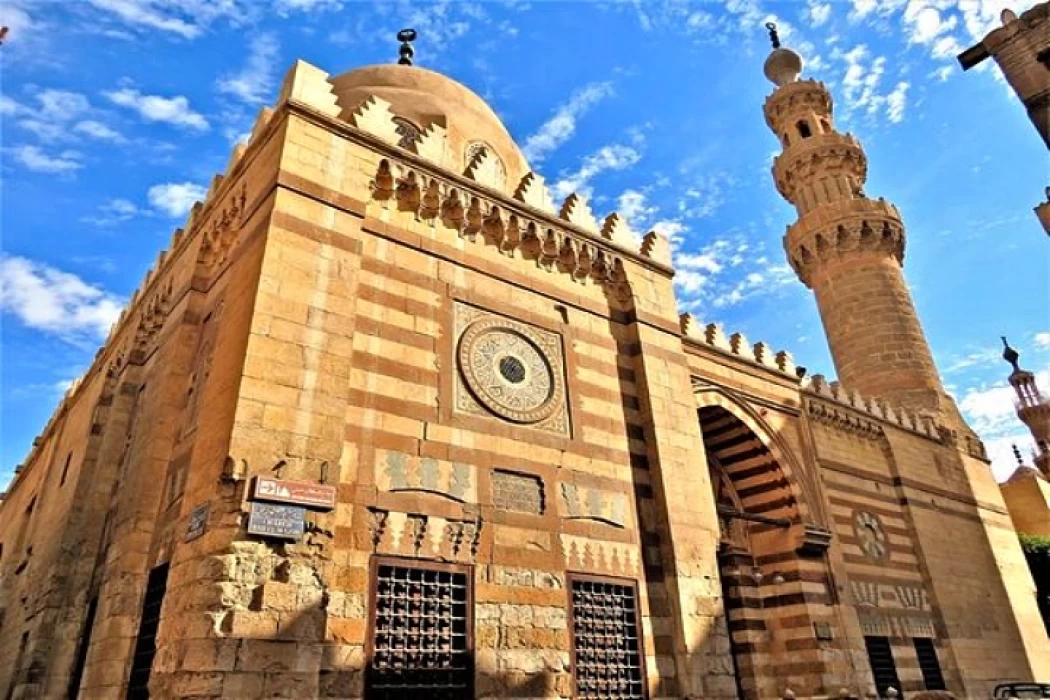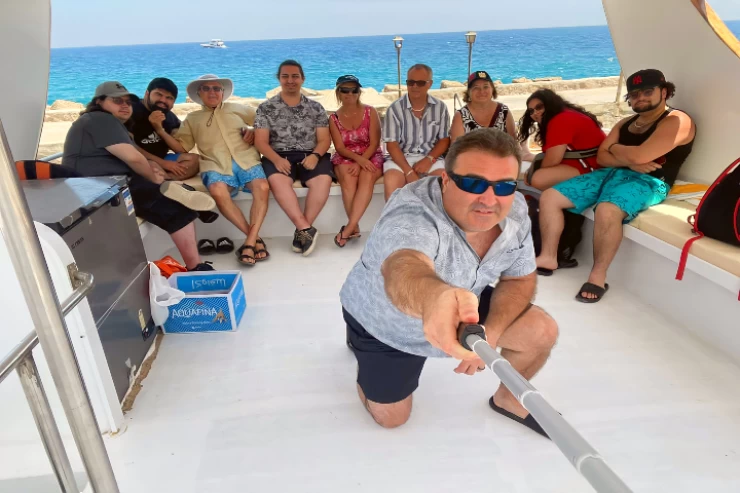
Mosque of Amir Aqsunqur
Mosque of Amir Aqsunqur
The mosque was built between 1346 and 1347 and is located in Cairo, Egypt. This mosque was built by Prince Aq Sangar, the builder of the Sultaniyah buildings, and to him is attributed the Aq Sangar Bridge on the Great Bay by the line of the Karmani basement opposite Habbaniyah, and he also built a magnificent house and two bathrooms on the line of the Nasiriyah pond and was among the Ushaqiyah in the In the early days of King Al-Nasser Muhammad bin Qalawun
Then he was made by Amir Akhur and transferred from there, making him the builder of the royal buildings, and he stayed there for a while, so he became very wealthy and built what was mentioned and made several endowments on the mosque, so he was deposed and confiscated and left Egypt to Aleppo and then transferred from there to Damascus, where he died in the year forty and seven hundred.
This mosque is close to the Citadel of the Mountain, between Bab al-Wazir and al-Tabanah. It was once the site of the cemeteries of the people of Cairo, and was built by Prince Aq Sangar al-Nasiri, who built it with stone and made its ceilings with arches of stone and marble, and took great care in its praise, so much so that he sat on its construction himself and removed the dirt with the work by hand and delayed his lunch in order to occupy himself with it.
Next to it, he established an office to read the Qur'an to Muslim orphans and a canteen to water people with fresh water, and when digging the foundation of this mosque, he found many dead people, and he made an estate from the villages of Aleppo that yielded one hundred and fifty thousand silver dirhams a year, about seven thousand dinars, and decided in it a lesson in which several jurists and Shaykh Shams al-Din Muhammad bin Laban al-Shafi'i gave him the sermon.
This mosque is one of the most important mosques in Egypt, but when the sedition occurred in the Levant and the deputies went out of obedience to the Sultan of Egypt after the death of King Zahir Barqouq, the presence of the endowment of this mosque was prevented because it is in the country of Aleppo, so the mosque was deprived of its functions except for the call to prayer.
When the year was fifteen hundred and eighteen, Prince Togan al-Dawadar built a water pond in its center, roofed it, and erected marble poles to hold the roof, which he took from the mosque of the trench, so the mosque was destroyed by the trench for that, and the water was transferred to this pond from the mosque's watering can, which was for the lamp. When King al-Muayyad Sheikh al-Zahiri arrested Togan on Thursday, the nineteenth day of Jumada al-Awwal, in the year sixteen hundred and eighteen, and took him to Alexandria and arrested him there, someone took the ox that was running the watering can, as Togan had taken it from him without price, as is the custom of our princes, so the water from the pool disappeared.
The main façade of the mosque is located on the western side of Bab al-Wazir Street, and the main entrance, which is recessed from the façade walls by about two meters, is at the center of the façade. The main entrance is surmounted by a banded necklace, and in the center of the entrance is a door surmounted by a lintel containing green and white marble castanets. To the right of the door is a row of windows whose lintels are decorated with green and white marble castings.
On the left is another row of windows. In the center of the front of this door is a round window made of finely hollowed stucco surrounded by beautifully colored marble panels, and below this window is a historical plaque inscribed with the name “Aladdin ibn al-Nasir Muhammad” and the date of his death in 746 AH.
The mosque consists of a central courtyard in the center of which is an ablution basin, built by Prince Togan al-Dawadar in 815 AH, 1412 AD, surrounded by four colonnaded porticoes, the largest of which is the Qibla Portico, which includes two bakkas, while the other three include one bakkah each.
The prayer house has a magnificent marble pulpit with colored marble sides. Its balustrade, arches, and helmet are carved with various decorations, and its door is crowned with a three-ring cornice of muqarnas, with two shutters made of inlaid wood. This pulpit is the oldest of the few marble pulpits in Cairo's ancient mosques.
The mosque belongs to the Mamluk architectural style and the mosque has a minaret with a unique shape that is distinct from other minarets of the Mamluk era. It consists of three cycles: The first is cylindrical, the second is decorated with muqarnas, and the third is octagonal, topped by a helmet with a copper crescent. It was built on an orthogonal base. The minaret rises to the level of the balconies that crown the outer walls of the mosque. The minaret has three balconies for the call to prayer, one on each floor of the minaret. It is mounted on rows of intricate stone muqarnas, as well as a mausoleum dome built in 746 AH-1345 AD, in which Prince Ala al-Din Kojak bin al-Nasir Muhammad was buried.















